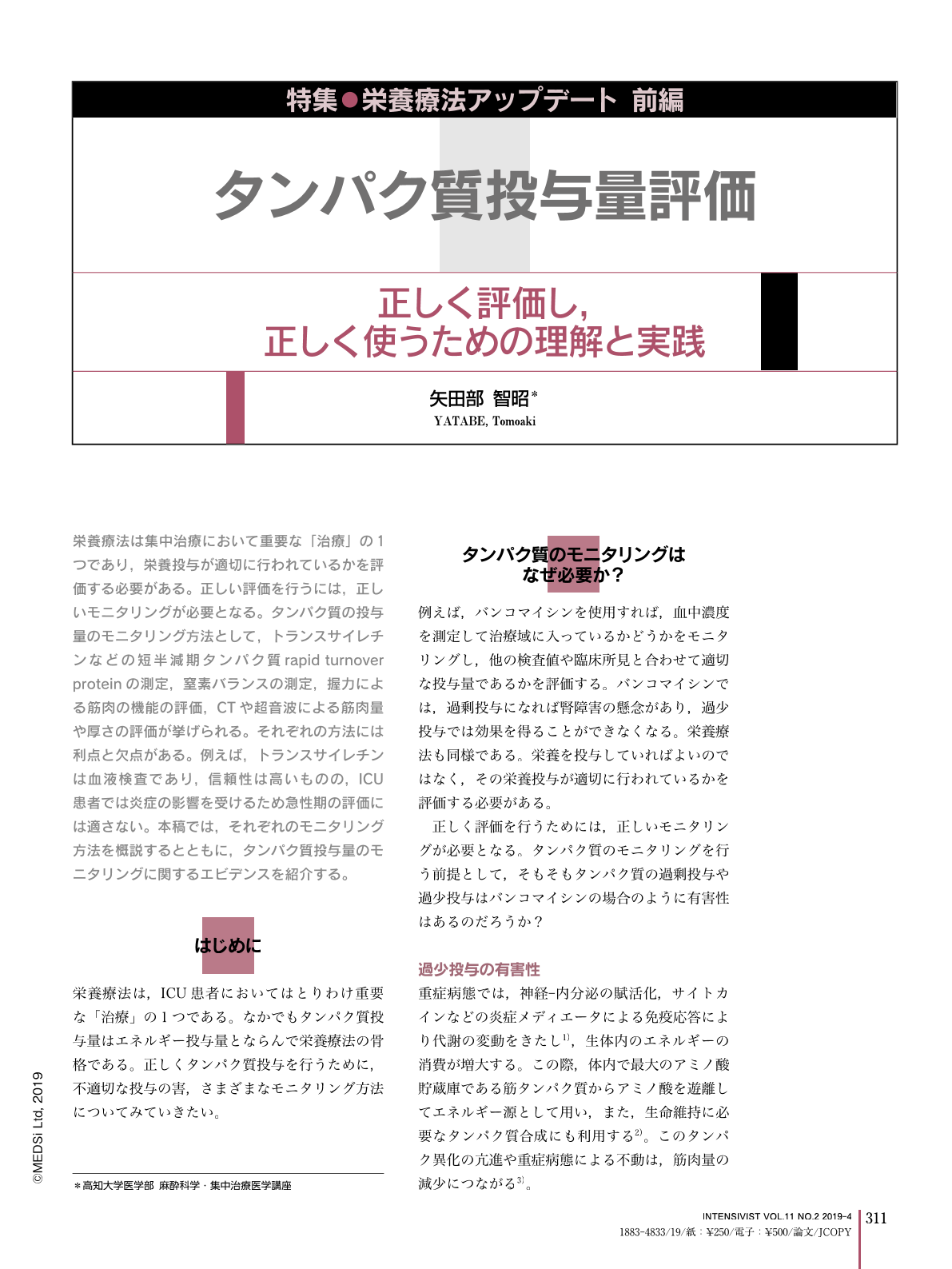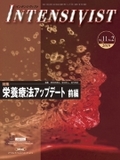Japanese
English
- 有料閲覧
- Abstract 文献概要
- 1ページ目 Look Inside
- 参考文献 Reference
栄養療法は集中治療において重要な「治療」の1つであり,栄養投与が適切に行われているかを評価する必要がある。正しい評価を行うには,正しいモニタリングが必要となる。タンパク質の投与量のモニタリング方法として,トランスサイレチンなどの短半減期タンパク質rapid turnover proteinの測定,窒素バランスの測定,握力による筋肉の機能の評価,CTや超音波による筋肉量や厚さの評価が挙げられる。それぞれの方法には利点と欠点がある。例えば,トランスサイレチンは血液検査であり,信頼性は高いものの,ICU患者では炎症の影響を受けるため急性期の評価には適さない。本稿では,それぞれのモニタリング方法を概説するとともに,タンパク質投与量のモニタリングに関するエビデンスを紹介する。
Nutritional support is one of the most important “treatments” for critically ill patients. It is necessary to evaluate whether this support is effective. Appropriate monitoring is necessary to correctly evaluate the effect of the treatment. Evaluation of the adequracy of protein administration include measurement of rapid turnover protein, nitrogen balance and evaluation of muscle thickness by CT scan and ultrasound. Each method has both advantages and disadvantages. For example, although the reliability of transthyretin is high, the blood sampling is necessary and inflammation affects this measurement. In this paper, an overview and evidence for each method of monitoring protein administration are introduced.

Copyright © 2019, MEDICAL SCIENCES INTERNATIONAL, LTD. All rights reserved.


